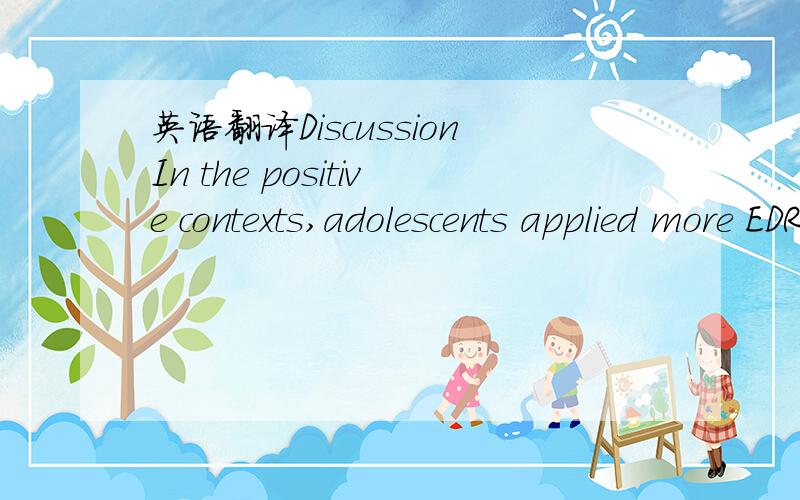英语翻译DiscussionIn the positive contexts,adolescents applied more EDR in front of peers than parents,while in negative contexts,their Table 1.The performance of applying emotional display rules in adolescents (M(SD)).performances were similar i
来源:学生作业帮助网 编辑:作业帮 时间:2024/04/27 22:08:01

英语翻译DiscussionIn the positive contexts,adolescents applied more EDR in front of peers than parents,while in negative contexts,their Table 1.The performance of applying emotional display rules in adolescents (M(SD)).performances were similar i
英语翻译
Discussion
In the positive contexts,adolescents applied more EDR in front of peers than parents,while in negative contexts,their Table 1.
The performance of applying emotional display rules in adolescents (M(SD)).performances were similar in front of the two kinds of interac- tive partners.All the participants used more EDR in negative contexts than in positive contexts.Compared with other-in-volved situations,they applied more EDR in self-involved situations.Girls used more EDR than boys.
英语翻译DiscussionIn the positive contexts,adolescents applied more EDR in front of peers than parents,while in negative contexts,their Table 1.The performance of applying emotional display rules in adolescents (M(SD)).performances were similar i
讨论
在积极情况下,青少年在同伴面前会比在父母面前使用更多的情感展示规律(EDR).在消极情况下,他们的.
表1.
青少年人运用情感展示规律的表现(M(SD)).
他们的表现在两种互动伙伴面前是相似的.所有的参与者都在消极情况下运用比在积极情况下更多的EDR.与有他人参与的情况相比,他们在自主参与的情况下运用更多的EDR.女孩使用EDR的频率超过男孩.
(第一句不完整.)